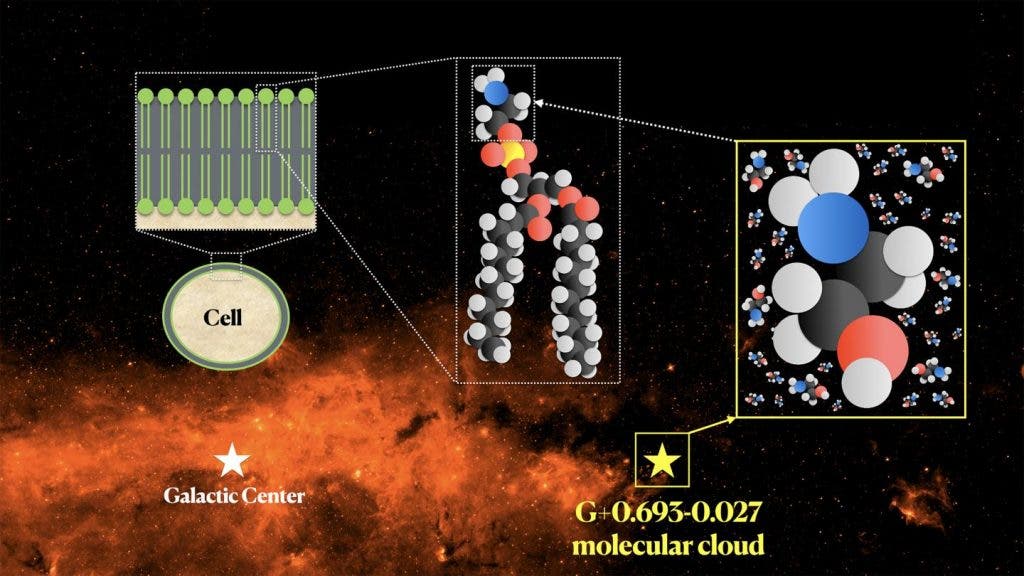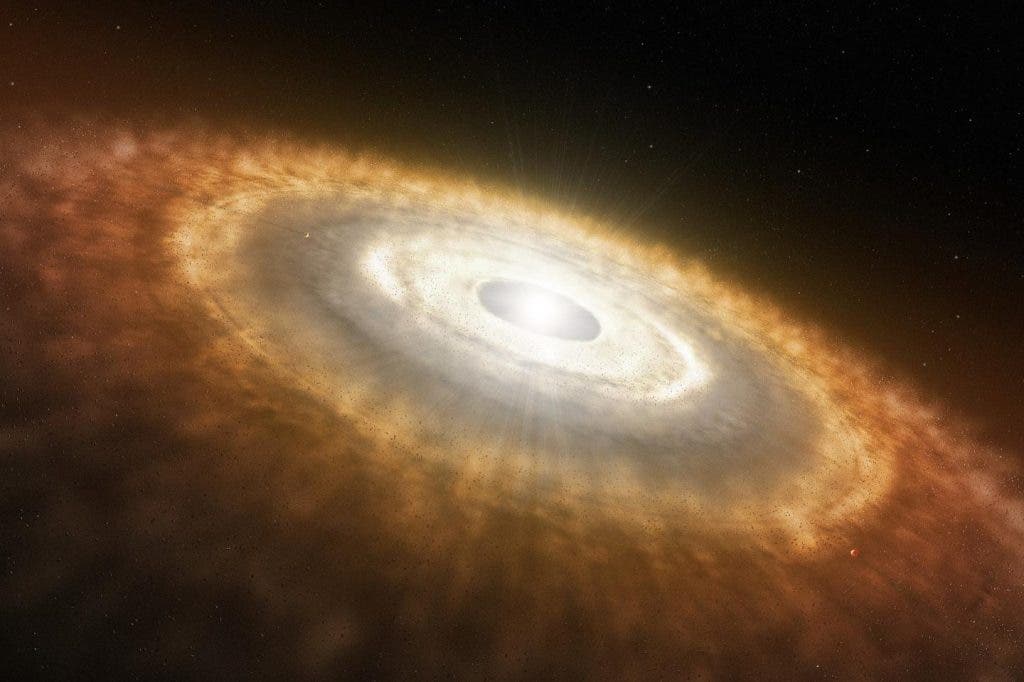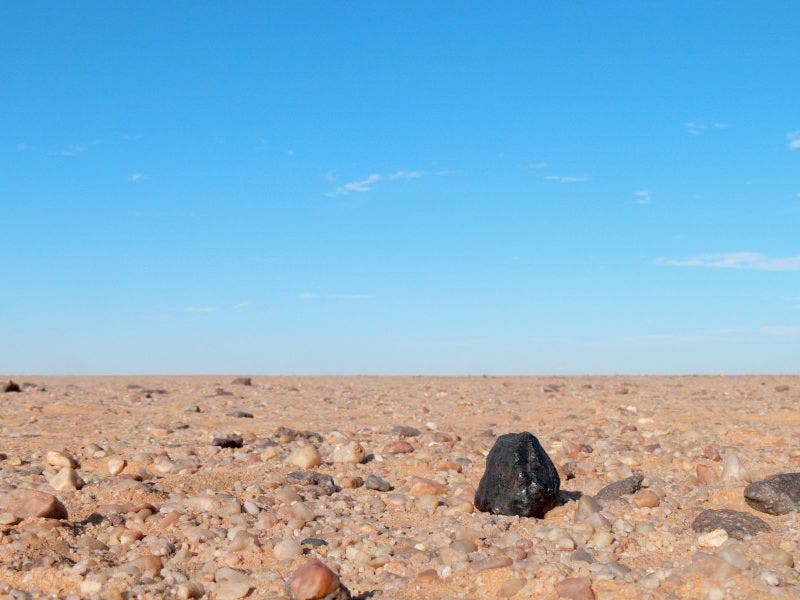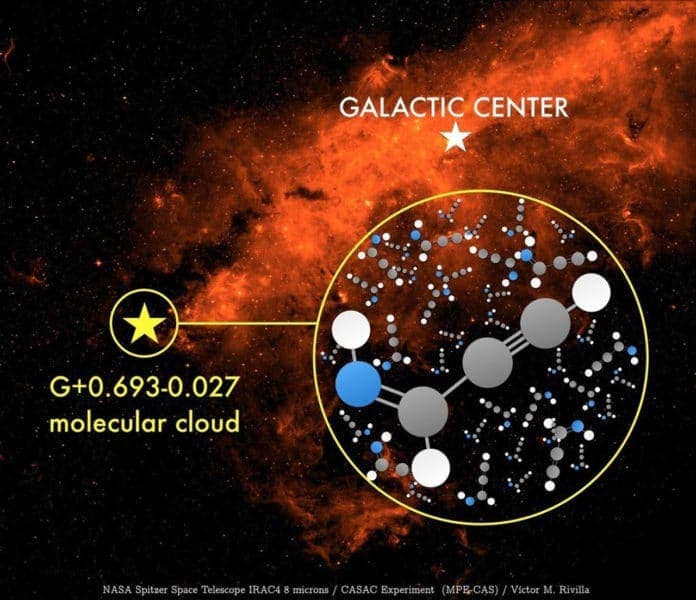Cell membranes are one of the most important elements of life on Earth holding together the genetic material and metabolic machinery of every living cell. Whilst we know those cell membranes are made of phospholipids, the origin of these molecules with their hydrophobic heads and hydrophobic tails is currently poorly understood.
Currently, scientists can’t explain where the elements that make up these molecules come from.
Extraordinary new research reveals that the source of a key ingredient of phospholipids–the simplest of the molecules that make up that hydrophilic head–could have originated in space, incorporated into smaller solar system bodies that were drawn into our planet as it formed. From there these molecules could eventually kick start the evolution of the first cellular membranes.

The discovery comes courtesy of a team of astronomers, including Víctor M. Rivilla, The Spanish Astrobiology Center, Madrid, Spain, who found prebiotic ethanolamine in a molecular cloud located close to the centre of the Milky Way.
“We have discovered in an interstellar molecular cloud the molecule ethanolamine, which is part of the head of phospholipids, the biomolecules that build up the cellular membranes,” says Rivilla. “I can add that these cells were absolutely crucial for the origin of life because they keep together the genetic material and the metabolic machinery.
“Without these cells, the origin of life is not possible.”
Rivilla also tells ZME Science that the discovery made by he and his colleagues could constitute a major step forward in our understanding of life here on Earth and elsewhere in our galaxy.
“We are seeing that the basic ingredients for life are likely distributed across the whole galaxy, which means that the miracle of life could happen, or will happen, or is currently happening, in other planetary systems.”
Víctor M. Rivilla
Delivered to Earth or Here From the Start?
This isn’t the first time that prebiotic ethanolamine has been discovered in space, researchers have previously found the molecules in meteorites. One striking example of this is the discovery of ethanolamine in the Almahate Sitta meteorite which entered Earth’s atmosphere on October 7, 2008, and exploded 37 kilometres above the Nubian Desert in Sudan.
These findings led to speculation that this vital ingredient in cell membranes was seeded on Earth via meteorite strike after forming within the meteorites from simpler amino acids. Lab impact experiments have shown that a significant amount of prebiotic molecules in comets and meteorites could survive the passage into our atmosphere and the impact with the surface of the planet lending credence to this theory.
Yet, this delivery method fails to explain the formation of cell membranes and more complex molecules as there are serious doubts as to whether it would result in enough ethanolamine available on an early Earth to allow these processes to begin.

Fortunately, there is another mechanism by which this molecule could have been present in Earth’s early epochs. It could have been present all along–incorporated during planetary formation. This would mean that ethanolamine would have to be present in the planetesimals and small bodies that initially came together to form our planet–seeded there by the interstellar medium.
“Panspermia was originally invoked as a way of transporting life from another place to Earth. This is different,” says Rivilla. “We are talking here about the chemical feedstock–the basic molecular precursors of biomolecules such as lipids–delivered at the dawn of our planet. This is sometimes called molecular panspermia.”
In order to support this idea, which would mean ethanolamine forms in space from smaller precursors, researchers have been searching the interstellar medium–the gas and dust that exist between planetary systems–for this molecule. Until now these searches had proved mostly unsuccessful.
Thus, this research provides the first evidence of ethanolamine in the interstellar medium.
A Small Part of Life’s Big Picture
Rivilla and his colleagues found the clear signal of prebiotic ethanolamine in the region of the molecular cloud G+0.693 using the 30-meter IRAM telescope located on Pico Veleta mountain in the Spanish Sierra Nevada in conjunction with the Yebes radiotelescopes.
The region has been at the centre of the search for organic molecules in space previously. In 2020 researchers–also including Rivilla–spotted an organic molecule that is key in the formation of amino acids in G+0.693-0.027. The molecule–propargylimine–is unstable here on Earth but thrives in low-density, low-temperature environments such as those found in the interstellar medium.
This latest discovery supports the idea that ethanolamine forms in interstellar space and then becomes part of planetesimals which are incorporated into forming planets. The researchers conclude that the availability of ethanolamine on early Earth, together with amphiphilic fatty acids or alcohols, may have contributed to the assembly and early evolution of primitive cell membranes. This theory is something that is also well supported by experiments that simulate the conditions on early Earth.
That isn’t the end for this line of investigation, however. The team will now set about finding some of the other key elements for living cells in the interstellar medium.
“We have detected a piece of the head of a phospholipid in space,” says Rivilla. “But there are other important pieces, such as the phosphate group, glycerol, or the tails, formed by fatty acids/alcohols. We will try to also detect them, to see if a whole phospholipid itself can be synthesised in space.”








